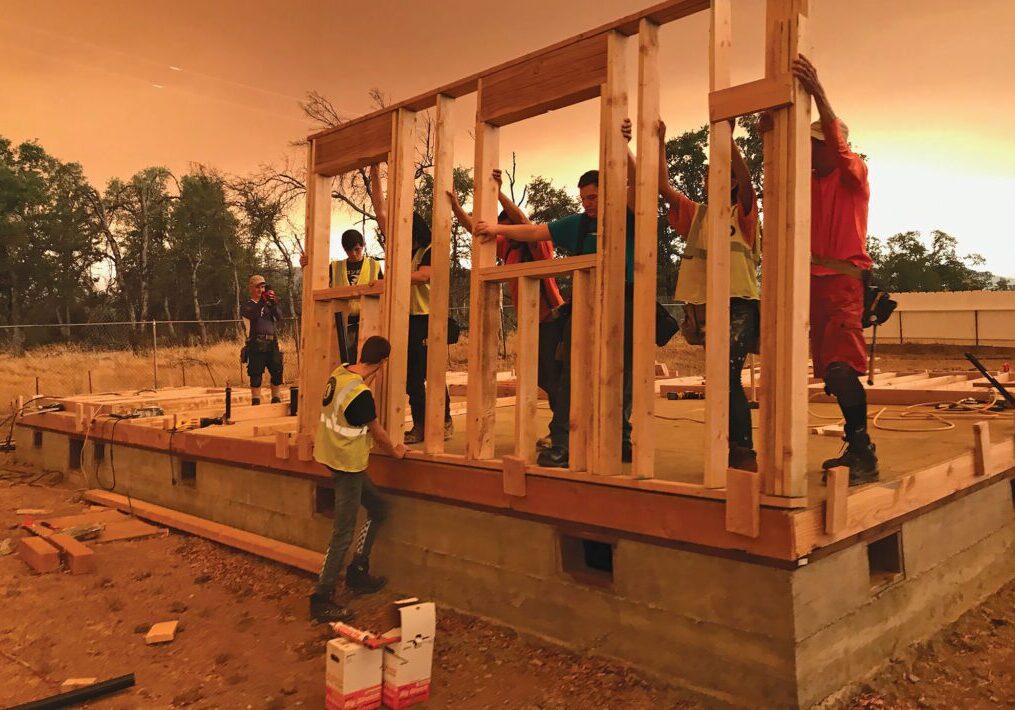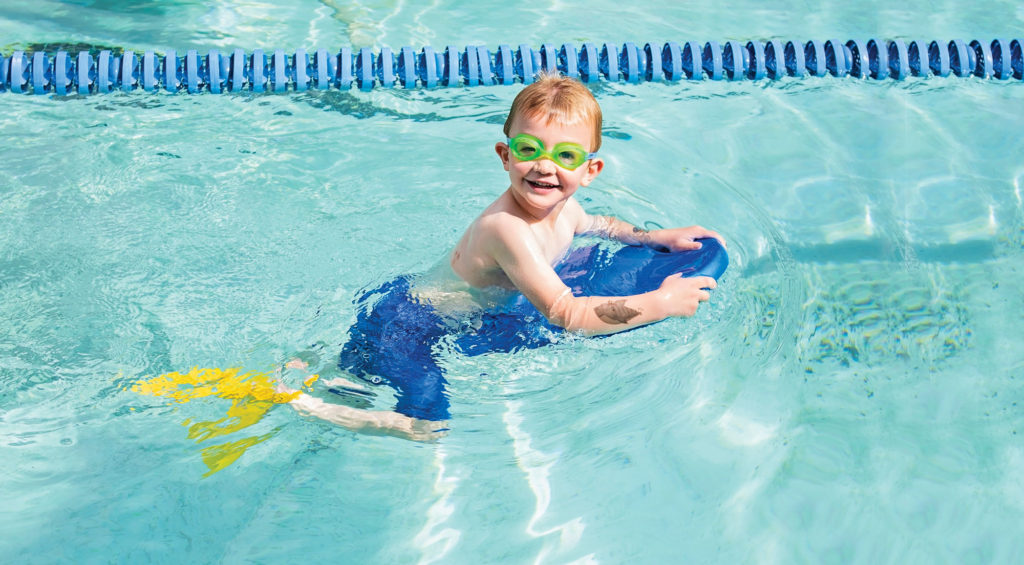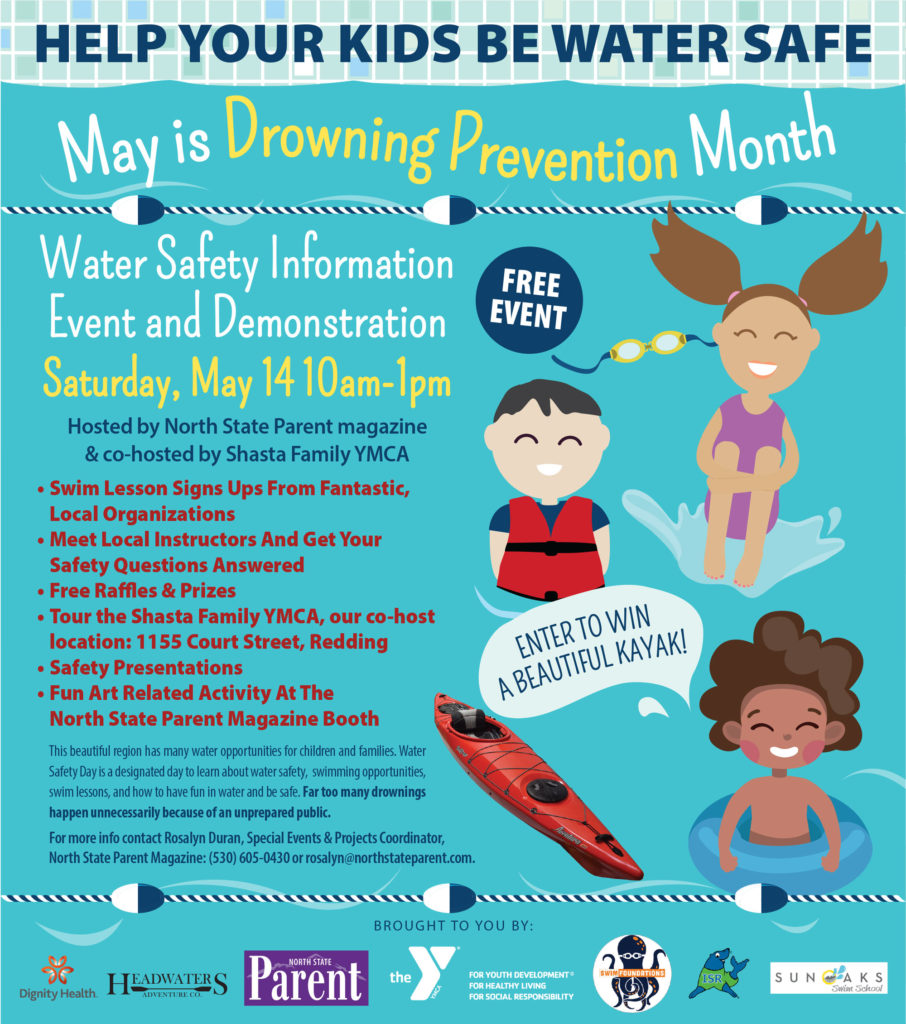As the weather warms up across the North State, families begin flocking to our lakes and rivers to enjoy boating, waterskiing, and swimming. And, with scorching summer temperatures typical in Northern California, pools are a common feature in many communities. All this water access provides fun outdoor adventures for families; and also comes with a higher risk of drowning, especially for young children.
Across the country, drowning is the second leading cause of death for children under 14. According to Shasta County Health and Human Services, there were 65 reported drownings in Shasta County from 2012 to 2021, with the highest rate for children from one to four years old.
Drowning prevention has gained national attention in the past few years. In 2018 Olympic American alpine ski racer Bode Miller and his wife Morgan lost their 19-month-old daughter Emeline after the toddler wandered out an open door and drowned in a neighbor’s pool.
After this tragedy, the couple began a campaign to increase awareness about water safety. Part of their work focuses on the need to develop equipment, change policy, and draft legislation so that more children won’t die from something so preventable.
Unsupervised access to water is a big risk
The biggest risk for young children is unsupervised access to swimming pools, bathtubs, backyard spas and natural bodies of water. Kids can slip in the water even if an adult is a few feet away, and even if they’ve been told not to go near the water.
Kelli Dealey, Director of Aquatics at North Valley Swim School in Chico, says, “We’ve been in business for 42 years and love to teach children the water safety skills for a lifetime of fun and fitness. But swim lessons will never take the place of parental supervision in any setting. Knowing that the leading cause of death in the United States for children 1 – 4 years of age is drowning, supervision is the first line of defense!”
Kids need constant and capable supervision around water
Experts strongly recommend a layered approach to water safety, including fences around pools, swimming lessons, CPR training for parents and caregivers, and the use of Coast Guard-approved life vests. The most important element, though, is constant and capable adult supervision. Nina Natina, owner of Swim Foundations in Shasta County, say parents often let their guard down when they’re with a group of people without even realizing it, and that is when kids can quickly and quietly slip away. “A parent or a guardian or somebody watching [their kids] is never deliberately not watching the pool. But drowning can happen in a matter of minutes.”
Siskiyou County has some of the most popular swimming destinations in Northern California, and many are off the beaten path. The Siskiyou County Sheriffs’ office warns parents that a common mistake parents make is having a false sense of security because they are in close proximity to their child. Their website explains how common errors can lead to tragic consequences, citing one example, “While hiking around the lake, you couldn’t have been more than a few hundred yards from the child. . .and you told them not to go near the water. It happened so fast.”
Water Guardian tags can help prevent drownings
Nicole Hughes, a Tennessee mom whose three-year-old son, Levi, drowned in a pool during a family vacation, created the Water Guardian tag to prevent another family from experiencing the same type of loss.
Also referred to as the “Water Watcher” badge, the tag is the size of a credit card and comes with a lanyard to wear around the neck as a physical reminder of who is in charge of watching the children. The idea is to pass the water guardian tag to another responsible adult after a set amount of time, so there will always be a dedicated set of eyes on the kids. The Water Guardian tag has also been endorsed by the American Lifeguard Association and is available to order online.
Nina says having a water guardian would have an impact because it’s easy for adults to get distracted. “You can have eight kids in the pool and four parents around, but it really doesn’t mean they’re all watching their kids,” she says.
 Swimming lessons are another layer of water safety
Swimming lessons are another layer of water safety
Along with constant supervision around water, the American Academy of Pediatrics (AAP) recommends swim lessons for all children as another layer of water safety.
The AAP had previously advised against swimming lessons for children under the age of four, but changed this advice based on recent evidence that pool safety classes for toddlers may reduce drowning risk. The Academy now recommends lessons starting as young as one year old, keeping in mind that each child is different. Always take into account how often your child is around water, your child’s emotional maturity, physical and developmental capabilities and limitations, interest in learning to swim, and how comfortable they are in the water.
Safety measures for home pools
Preventing unwanted access to the water is another critical step in preventing drowning. The American Red Cross recommends protecting home pools with a four-foot high fence or barrier with a self-closing, self-latching gate. Other safety measures include placing a safety cover on the pool or hot tub and removing ladders or access steps when not in use. Pool alarms that go off if anyone enters the pool are another option.
Even strong swimmers need supervision
Even kids who know how to swim can be at risk of drowning. Along with the one to four year age group, teenagers have a greater danger of drowning as they tend to engage in more risk-taking behavior in open water. Adult supervision and never swimming alone are still essential, along with wearing Coast Guard approved life vests around any water where there’s a current.
Never let your guard down and model water safety
It’s important not to let your guard down, no matter a child’s age or swimming ability. Nina says modeling water safety for kids of any age is imperative. “This is all about the parents and the caregivers, really. That’s who’s responsible to educate themselves and take it seriously.”
Posted in: Out & About, Safety, Youth & Teen
Comment Policy: All viewpoints are welcome, but comments should remain relevant. Personal attacks, profanity, and aggressive behavior are not allowed. No spam, advertising, or promoting of products/services. Please, only use your real name and limit the amount of links submitted in your comment.
You Might Also Like...

Growing Up Online – Getting Off To A Good Start On Facebook
Now that a quarter of the people online are also on Facebook, it’s no surprise children want to be there too. Getting a first Facebook page has become a rite […]

Making Moving Easier For Kids
Whether across the country or just across town, moving is a big adjustment for everyone in the family. Children in particular can feel overwhelmed and uprooted because they are rarely […]

Getting All the Buzz on Bees at Orland’s Honeybee Discovery Center
Because one-third of all the food we eat is directly or indirectly dependent on honeybee pollination, bees and other pollinators are vital for human life. At Orland’s Honeybee Discovery Center, […]

California Heritage YouthBuild Academy
“Adults have to keep that delicate balance when making a meaningful connection with teenagers. Adults need to stay young-at-heart, while at the same time recognizing that teenagers are longing to […]







